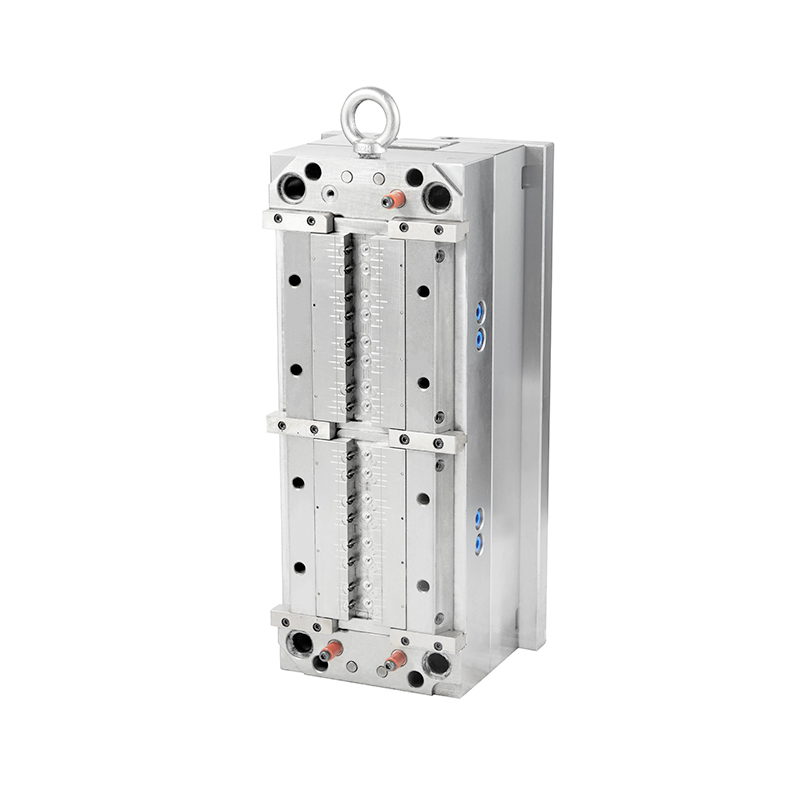 2025.10.03
2025.10.03
 News
News
Importance of Automotive Buckle Molds
Automotive buckle molds are important because they directly influence the performance and reliability of seat belt components. Buckles must withstand repeated use, sudden tension, and exposure to temperature changes or chemicals inside a vehicle. High-quality molds ensure consistent dimensions, precise locking mechanisms, and smooth surface finishes. Additionally, molds designed for efficiency and durability help reduce production costs, improve cycle times, and minimize maintenance requirements. Choosing the right mold ensures that automotive buckles meet industry safety standards while maintaining production efficiency.

Key Characteristics of Automotive Buckle Molds
Several characteristics define the quality and performance of automotive buckle molds:
1. Material and Durability
Automotive buckle molds are commonly made from high-grade steel, such as H13, P20, or stainless steel. H13 steel provides heat resistance and toughness, suitable for high-volume production and long mold life. P20 steel offers good wear resistance and is ideal for general-purpose molds. Stainless steel is corrosion-resistant, providing additional durability in molds exposed to moisture or chemical agents. High-quality mold materials ensure consistent performance and reduce the risk of deformation over time.
2. Precision and Tolerance
Precision is critical in automotive buckle molds. Buckles must fit securely, engage smoothly, and release reliably. High-precision molds maintain tight tolerances, ensuring that each component functions correctly and consistently. Accurate molds help prevent defects such as misaligned parts, weak locking mechanisms, or uneven surfaces, which could affect buckle performance.
3. Mold Design and Complexity
Buckle molds vary in design complexity depending on the type of buckle and production requirements. Simple molds are suitable for standard buckles, while complex molds are used for adjustable, multi-part, or ergonomic designs. Multi-cavity molds allow the production of several buckles per cycle, improving efficiency for large-scale manufacturing.
4. Surface Finish
The surface finish of a mold affects the appearance and function of the buckle. Polished molds create smooth surfaces that enhance the feel and operation of the buckle. Textured or patterned molds can improve grip or aesthetics. A well-finished mold ensures both visual appeal and reliable operation of the buckle.
5. Cooling and Ejection Systems
Efficient cooling channels in the mold help maintain dimensional stability and reduce cycle times. Proper ejection systems, such as pins or plates, ensure that completed buckles are removed without deformation or damage. These features improve production efficiency and reduce waste.
6. Maintenance and Longevity
Automotive buckle molds require regular maintenance to ensure long-term performance. Cleaning, lubrication, and inspection of critical components prevent wear and maintain mold precision. Durable molds with easy maintenance routines minimize downtime and maintain consistent production quality.
How to Choose an Automotive Buckle Mold
Selecting the right automotive buckle mold depends on production needs, buckle design, and operational considerations:
Determine Production Volume: High-volume production benefits from multi-cavity molds, while small batches may use single-cavity molds.
Evaluate Buckle Design: Simple molds are suitable for standard buckles, while complex molds support adjustable or ergonomic designs.
Consider Material and Durability: Choose mold materials that withstand repeated cycles, temperature variations, and operational demands.
Assess Precision Needs: High-precision molds ensure reliable locking mechanisms and consistent part quality.
Review Cooling and Ejection Systems: Proper cooling and ejection improve cycle efficiency and reduce the risk of defects.
Plan for Maintenance: Select molds that allow easy inspection, cleaning, and component replacement to maintain long-term performance.
Applications of Automotive Buckle Molds
Automotive buckle molds are used in manufacturing:
Seat belt buckles for cars, trucks, and buses
Safety harness components for commercial vehicles or racing equipment
Adjustable and ergonomic buckles for automotive interiors
Decorative or functional buckles integrated into automotive seat designs